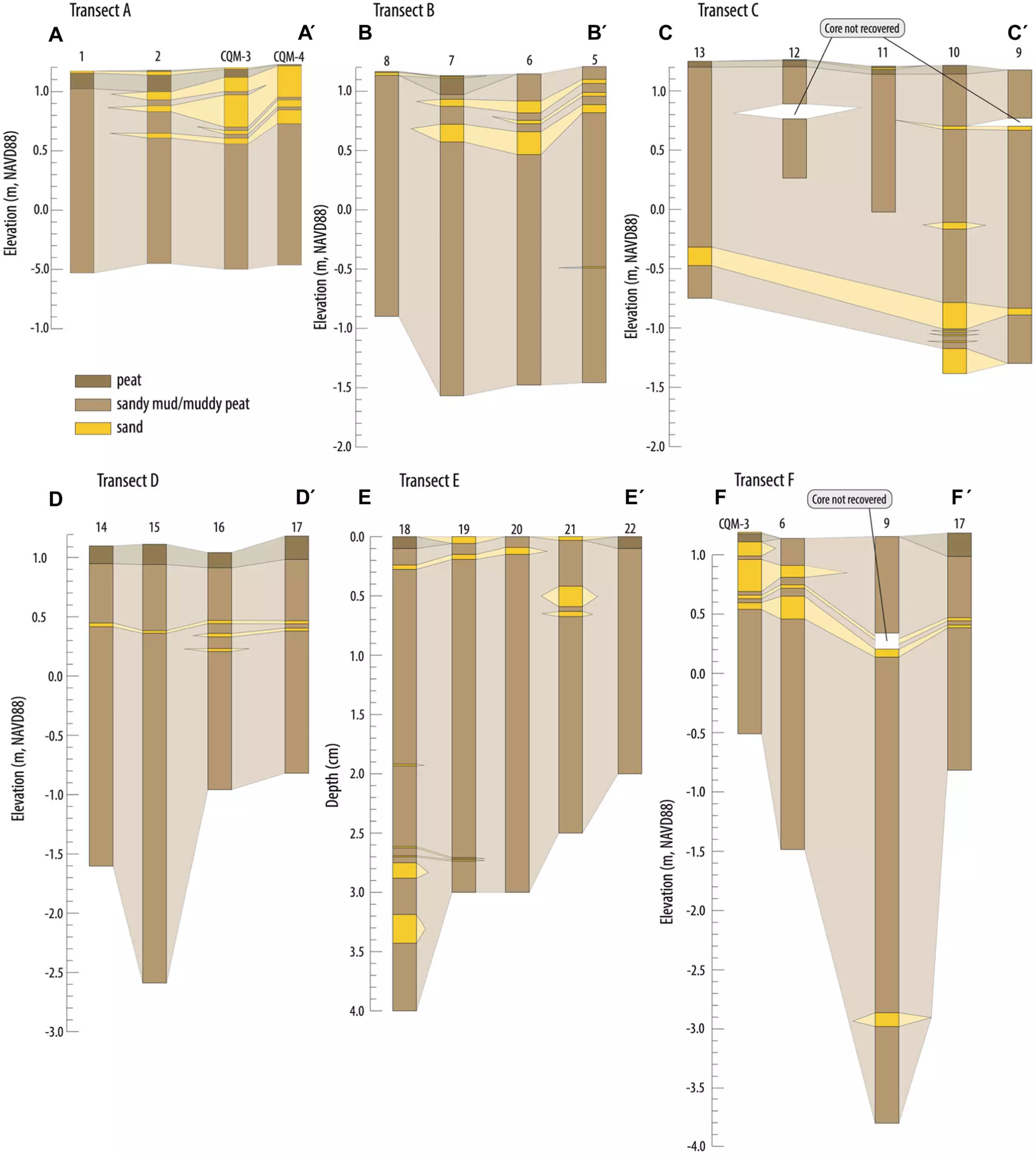In a remarkable foray into the geological past, a research collective led by Rutgers University-New Brunswick has pioneered a novel methodology to peel back the layers of time and reveal evidence of storms spanning over four centuries. By meticulously analyzing coastal sediments in New Jersey’s Cheesequake State Park wetlands, the team has not only unearthed historical accounts of hurricanes dating back as far as 1584 but has also reinforced the significance of sediment analysis in understanding climatic shifts. This revelation is vital, especially as humanity grapples with an increasingly volatile climate.
Traditional methods of storm analysis have relied heavily on contemporary instrumentation like tidal gauges, which capture data on current storm activity. However, these tools only skim the surface—literally—of our planet’s meteorological history, leaving researchers with an incomplete picture of how often and how severely storms have ravaged coastlines through the ages. The Rutgers team’s approach allows for an examination of sediment layers, termed “overwash deposits,” presenting a newfound window into the natural cataclysms of the past and a key to predicting future events.
Breaking New Ground in Geological Research
Kristen Joyse, the lead author and a coastal sedimentologist, succinctly encapsulated the study’s importance: “These sediment records allow us to look much further back in time than current instrumentation allows us.” It is this depth of exploration that is both intriguing and essential as climate change continues to alter hurricane patterns. The research provides a bedrock of evidence that could inform better climate models and disaster preparedness strategies, thereby allowing future generations to better navigate the perils of natural disasters.
In this exciting research, eight sediment cores were extracted, representing distinct storm deposits that document climatic events predating existing records. The corroboration between contemporary storm data and ancient deposits allows for a robust understanding of how storms have ebbed and flowed in frequency and intensity. The discovery of storm surges linked to documented hurricanes like Sandy in 2012, as well as historical hurricanes as far back as the late 16th century, reveals a more intricate and long-standing narrative about our coastal landscapes.
New Methodologies Fuel Old Questions
The detailed analysis did not just confirm the existence of these ancient storms but also prompted an array of questions about the patterns of sediment preservation. Joyse posed thought-provoking inquiries: Why do some storms leave a mark in sediment while others fade from record? What climatic conditions influence this preservation? Such questions reflect a scholarly curiosity that seeks not only to unearth the past but also to elucidate the present and future impacts of climate change on storm activity.
The study’s methodology—comparing sediment samples with high-water tidal records—sets a precedent for future research. The comparison revealed that while sediment does capture a wealth of storm history, it is not exhaustive. Notably, several extreme weather events recorded by modern gauges were conspicuously absent from the geological record. This mismatched dataset begs for a refined understanding of sediment dynamics and serves as a reminder that while the past is crucial, it is equally important to recognize its limitations.
Implications for Climate Science
The implications of this ground-breaking research extend beyond mere historical curiosity. The findings serve as a powerful tool for climate scientists aiming to forecast how storm patterns may evolve amidst a shifting climate landscape. Understanding the intricacies of storm frequency and intensity in relation to environmental variations can arm us with vital knowledge to prepare for what the future might hold.
This pursuit to decode past climatic events is not merely about cataloging history; it is, in essence, about girding our communities against future adversities. The data derived from this sediment research could potentially feed into models that predict how storms might change in frequency and strength, informing policymakers as they draft laws that could save lives and property in the event of looming disasters.
In a world increasingly defined by climatic upheaval, this research stands as a potent reminder of our connection to the history written in the earth beneath our feet. It challenges us to rethink how we document, analyze, and, ultimately, prepare for the storms yet to come. The dedication and innovation demonstrated by the Rutgers team herald not just academic achievement but societal obligation to heed the lessons of the past as we navigate the future’s uncertain waters.


Leave a Reply